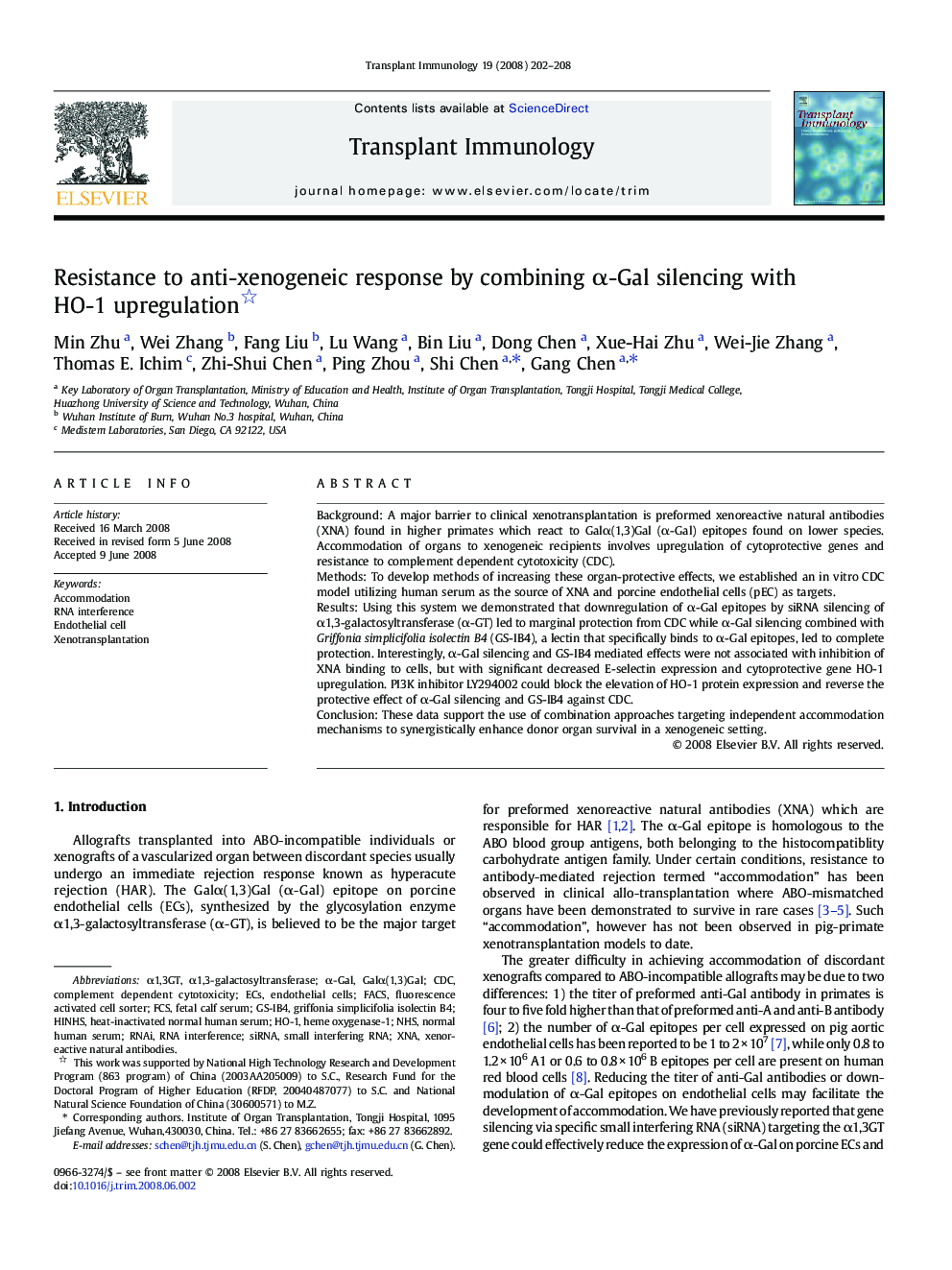| کد مقاله | کد نشریه | سال انتشار | مقاله انگلیسی | نسخه تمام متن |
|---|---|---|---|---|
| 3392576 | 1592687 | 2008 | 7 صفحه PDF | دانلود رایگان |

BackgroundA major barrier to clinical xenotransplantation is preformed xenoreactive natural antibodies (XNA) found in higher primates which react to Galα(1,3)Gal (α-Gal) epitopes found on lower species. Accommodation of organs to xenogeneic recipients involves upregulation of cytoprotective genes and resistance to complement dependent cytotoxicity (CDC).MethodsTo develop methods of increasing these organ-protective effects, we established an in vitro CDC model utilizing human serum as the source of XNA and porcine endothelial cells (pEC) as targets.ResultsUsing this system we demonstrated that downregulation of α-Gal epitopes by siRNA silencing of α1,3-galactosyltransferase (α-GT) led to marginal protection from CDC while α-Gal silencing combined with Griffonia simplicifolia isolectin B4 (GS-IB4), a lectin that specifically binds to α-Gal epitopes, led to complete protection. Interestingly, α-Gal silencing and GS-IB4 mediated effects were not associated with inhibition of XNA binding to cells, but with significant decreased E-selectin expression and cytoprotective gene HO-1 upregulation. PI3K inhibitor LY294002 could block the elevation of HO-1 protein expression and reverse the protective effect of α-Gal silencing and GS-IB4 against CDC.ConclusionThese data support the use of combination approaches targeting independent accommodation mechanisms to synergistically enhance donor organ survival in a xenogeneic setting.
Journal: Transplant Immunology - Volume 19, Issues 3–4, July 2008, Pages 202–208